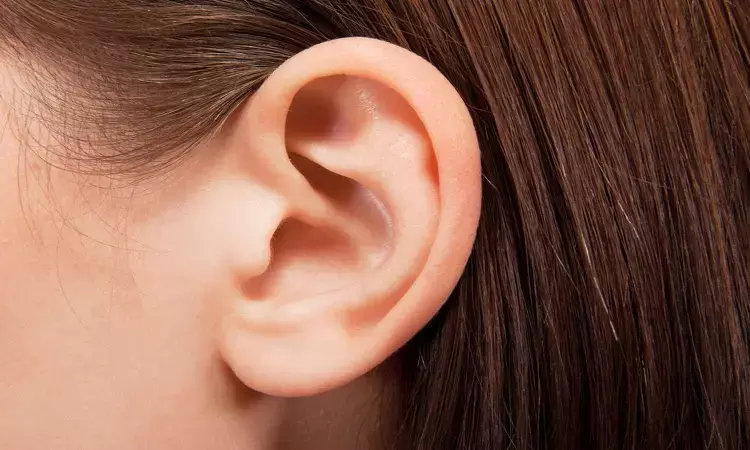- Home
- Medical news & Guidelines
- Anesthesiology
- Cardiology and CTVS
- Critical Care
- Dentistry
- Dermatology
- Diabetes and Endocrinology
- ENT
- Gastroenterology
- Medicine
- Nephrology
- Neurology
- Obstretics-Gynaecology
- Oncology
- Ophthalmology
- Orthopaedics
- Pediatrics-Neonatology
- Psychiatry
- Pulmonology
- Radiology
- Surgery
- Urology
- Laboratory Medicine
- Diet
- Nursing
- Paramedical
- Physiotherapy
- Health news
- Fact Check
- Bone Health Fact Check
- Brain Health Fact Check
- Cancer Related Fact Check
- Child Care Fact Check
- Dental and oral health fact check
- Diabetes and metabolic health fact check
- Diet and Nutrition Fact Check
- Eye and ENT Care Fact Check
- Fitness fact check
- Gut health fact check
- Heart health fact check
- Kidney health fact check
- Medical education fact check
- Men's health fact check
- Respiratory fact check
- Skin and hair care fact check
- Vaccine and Immunization fact check
- Women's health fact check
- AYUSH
- State News
- Andaman and Nicobar Islands
- Andhra Pradesh
- Arunachal Pradesh
- Assam
- Bihar
- Chandigarh
- Chattisgarh
- Dadra and Nagar Haveli
- Daman and Diu
- Delhi
- Goa
- Gujarat
- Haryana
- Himachal Pradesh
- Jammu & Kashmir
- Jharkhand
- Karnataka
- Kerala
- Ladakh
- Lakshadweep
- Madhya Pradesh
- Maharashtra
- Manipur
- Meghalaya
- Mizoram
- Nagaland
- Odisha
- Puducherry
- Punjab
- Rajasthan
- Sikkim
- Tamil Nadu
- Telangana
- Tripura
- Uttar Pradesh
- Uttrakhand
- West Bengal
- Medical Education
- Industry
Earwax test could help identify early diabetes: Study

UK: Diabetes can now be identified early with the help of ear wax test - that measures glucose levels in one's ear wax, reveals a recent study in the MDPI journal Diagnostics. According to the study, earwax glucose measurements were approximately 60% more reliable than the current standard HbA1c test in reflecting glycemia over a month.
In addition, the test can be conducted at home without clinical supervision — could also be applied to measure COVID-19 antibodies.
Diabetes, a disorder characterized by a sustained increase in glucose levels, is the fourth cause of death globally. To date, there is not a practical, as well as an accurate sample for reflecting chronic glucose levels. Glucose levels have already been measured using earwax samples elsewhere including in diabetic patients [35], those studies did not investigate if the level found in this monosaccharide represented its long term systemic concentration.
Considering this, Andrés Herane-Vives, University College London, Bloomsbury, London, UK, and colleagues aimed to validate the use of earwax for measuring long-term glucose concentration by using a novel, self-cleaning outer-ear device which does not require specific technical expertise.
For the purpose, the researchers measured earwax glucose in 37 controls. Participants provided glycated hemoglobin (HbA1c), standard serum, and earwax samples at two time-points, one month apart. The specimens measured baseline fasting glucose, a follow-up postprandial glucose level and a between sample chronic glucose, calculated using the average level on the two occasions. The baseline earwax sample was obtained using a clinical method and the follow-up using a novel self-sampling earwax device.
Key findings of the study include:
- The earwax analytic time was significantly faster using the novel device, in comparison to the clinical use of the syringe.
- Earwax accurately reflected glucose at both assessments with stronger correlations than HbA1c.
- Follow-up postprandial concentrations were more significant than their respective fasting baseline concentrations, reflecting differences in fasting and postprandial glycemia and more efficient standardization at follow up.
- Earwax demonstrated to be more predictable than HbA1c in reflecting systemic fasting, postprandial and long-term glucose levels, and to be less influenced by confounders.
- Earwax glucose measurements were approximately 60% more predictable than HbA1c in reflecting glycemia over a month.
"Earwax showed to be more predictable than HbA1c at reflecting acute and chronic glucose levels in healthy people. Earwax was also a more stable specimen since it was not affected by any confounders," wrote the authors.
"Future larger validation longitudinal studies could correlate a higher number of fasting and postprandial plasma glucose samples with EGC and consider randomization to confirm the superiority of earwax methods. The earwax self-sampling device proved to be an effective method to measure EGC and may be utilized in diabetes and other metabolic disorders. EGC using the novel device may be a harmless, economic, and suitable test for measuring long-term glucose concentrations," they concluded.
The study, "A Novel Earwax Method to Measure Acute and Chronic Glucose Levels," is published in the MDPI journal Diagnostics.
DOI: https://www.mdpi.com/2075-4418/10/12/1069/htm
Dr Kamal Kant Kohli-MBBS, DTCD- a chest specialist with more than 30 years of practice and a flair for writing clinical articles, Dr Kamal Kant Kohli joined Medical Dialogues as a Chief Editor of Medical News. Besides writing articles, as an editor, he proofreads and verifies all the medical content published on Medical Dialogues including those coming from journals, studies,medical conferences,guidelines etc. Email: drkohli@medicaldialogues.in. Contact no. 011-43720751


